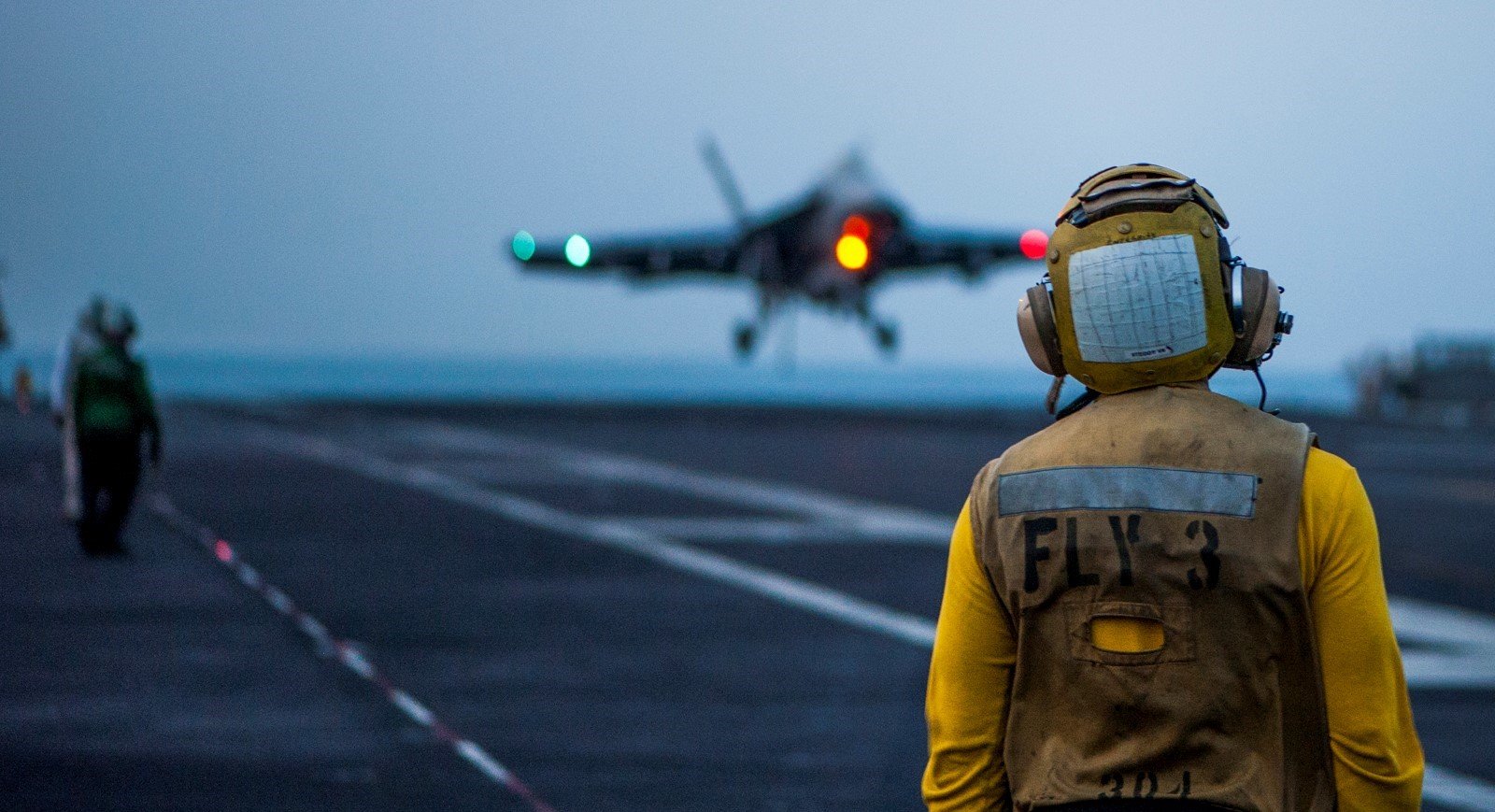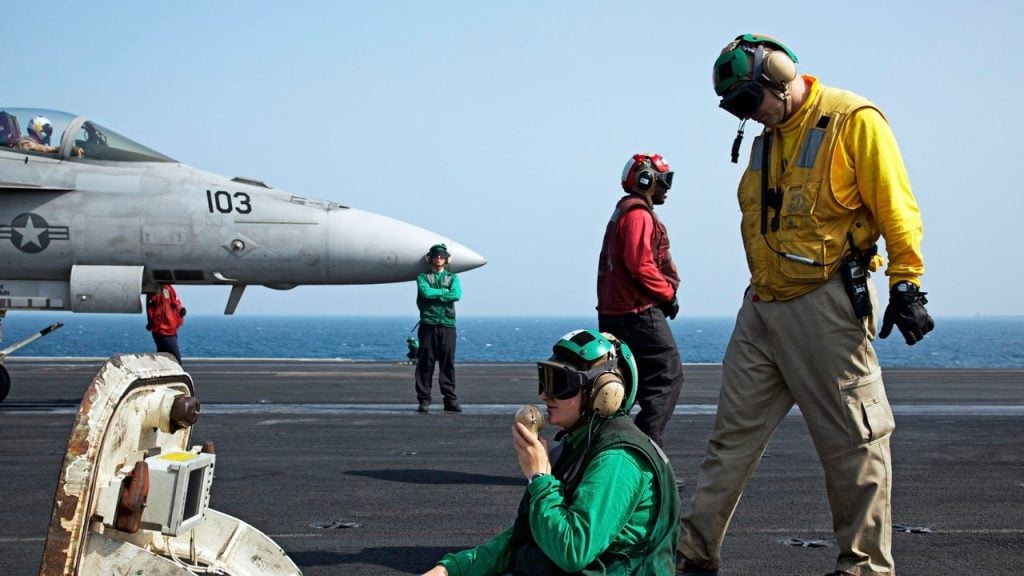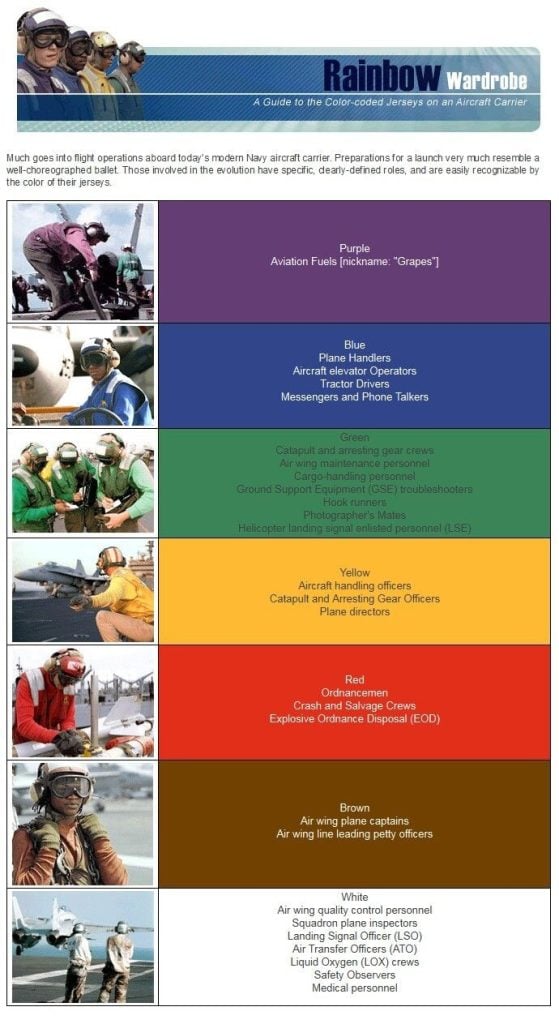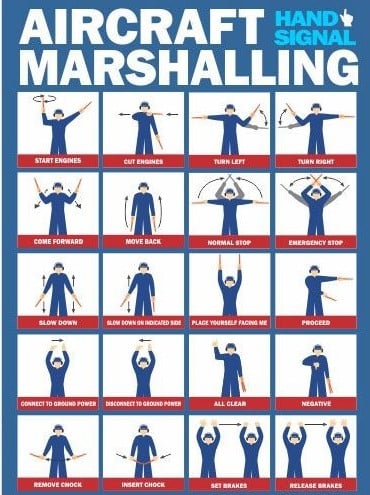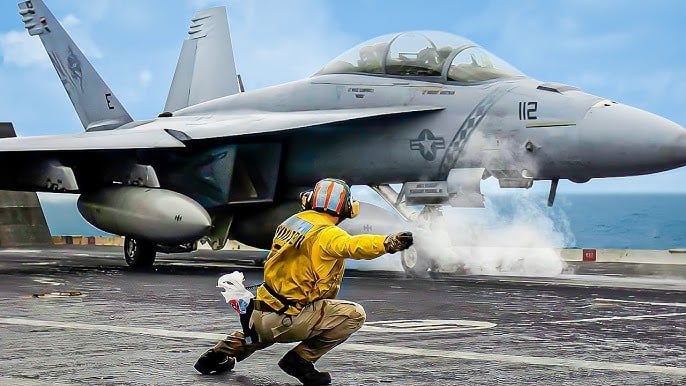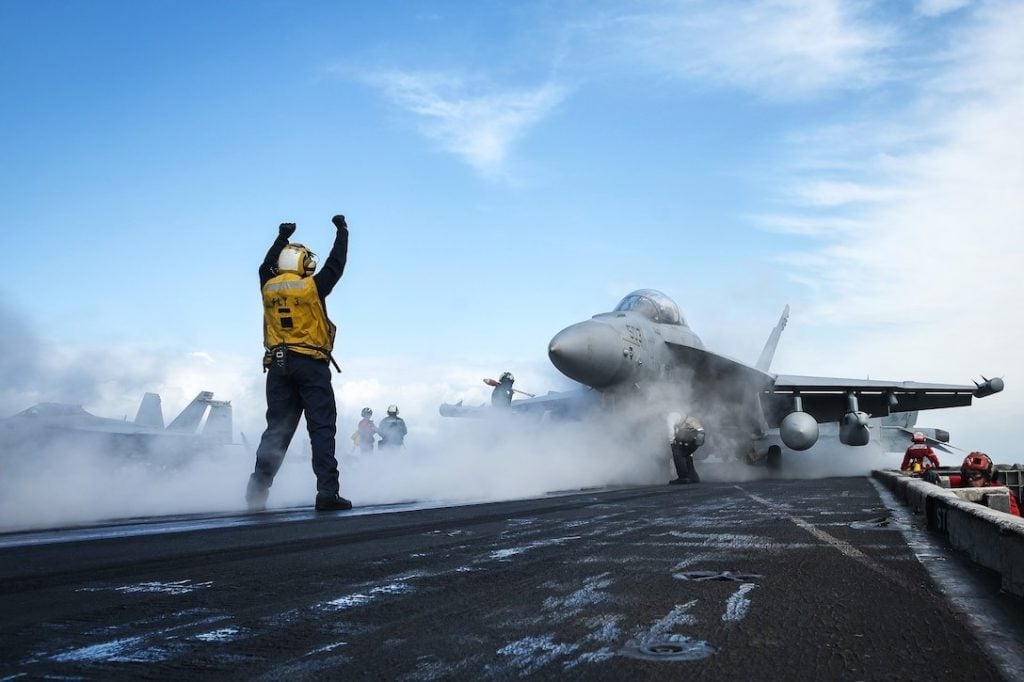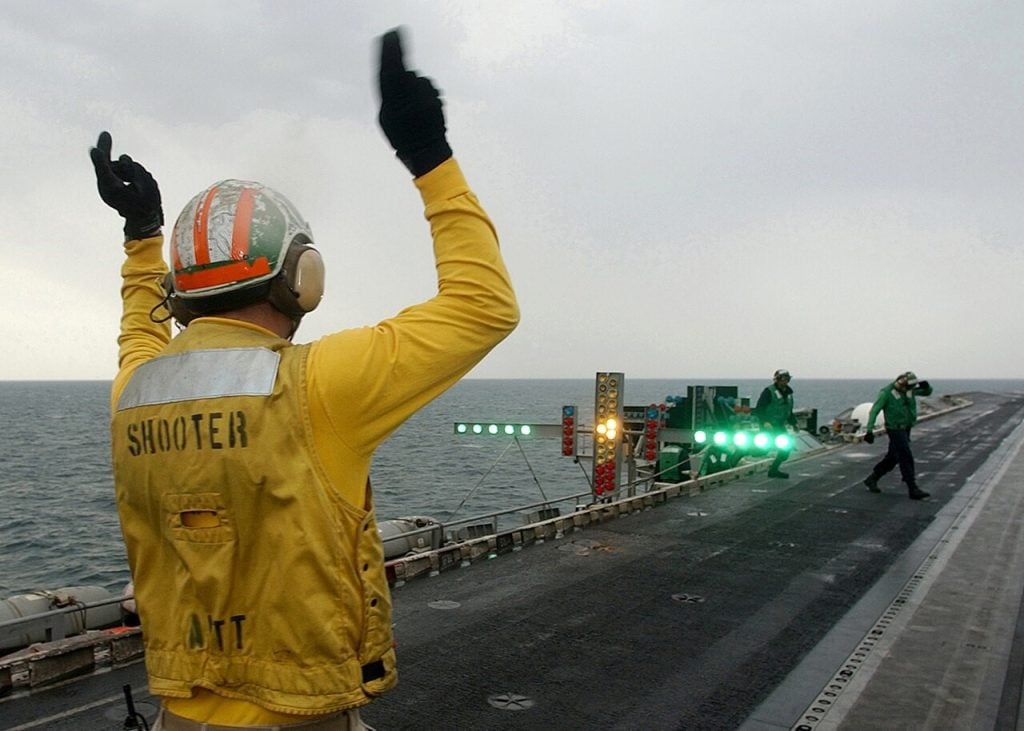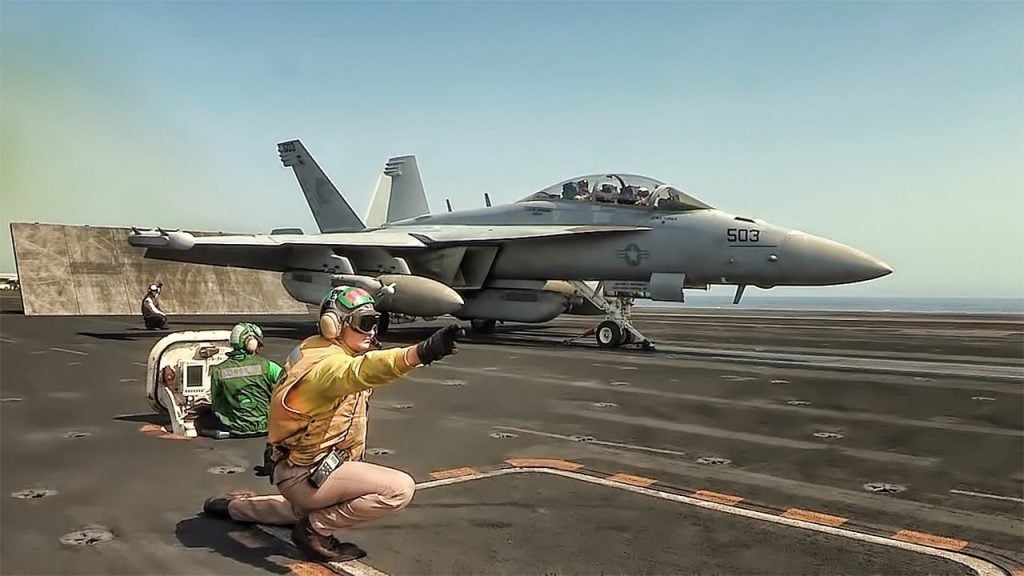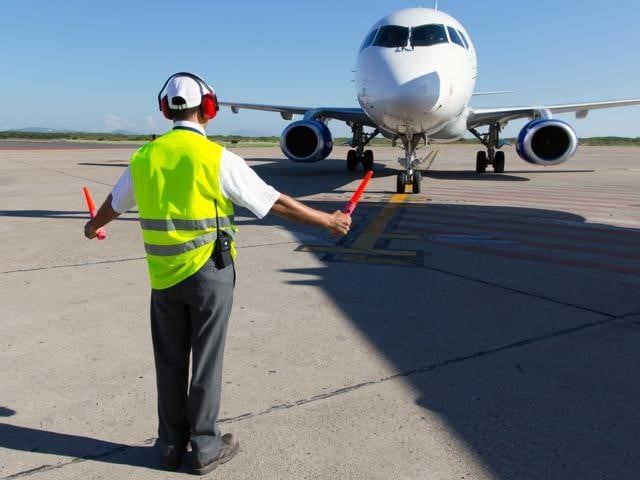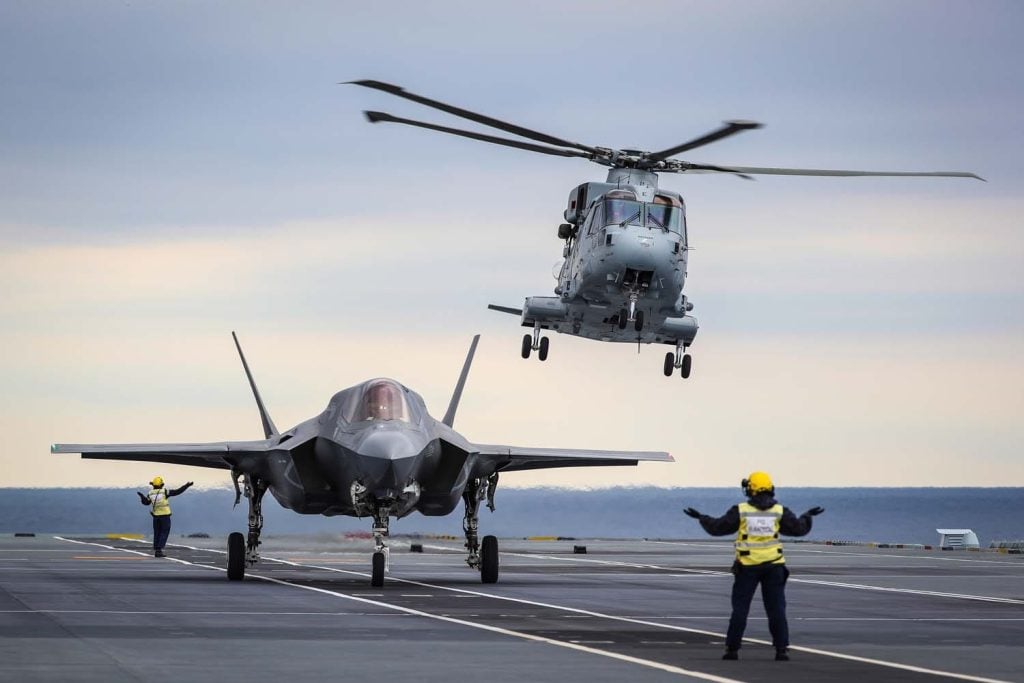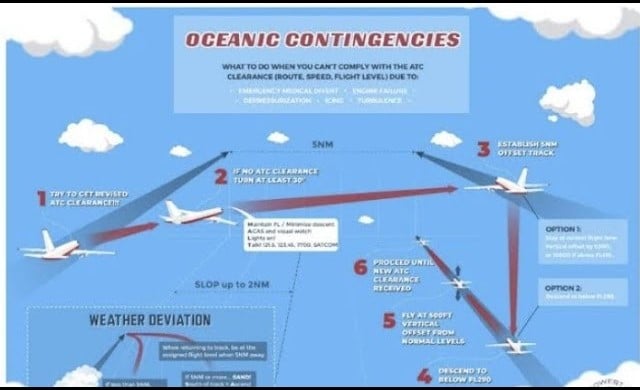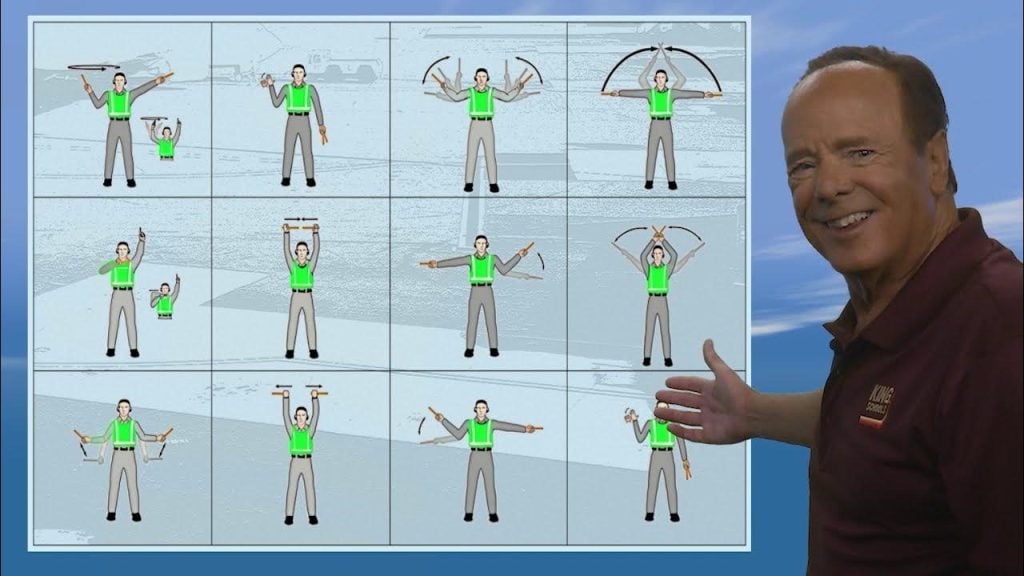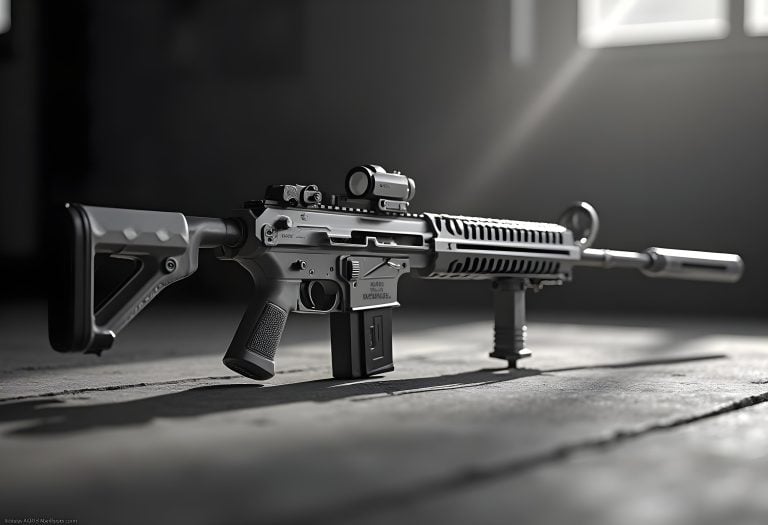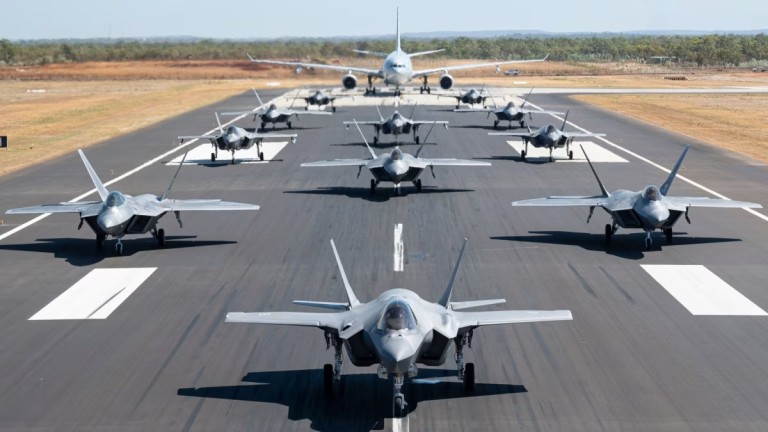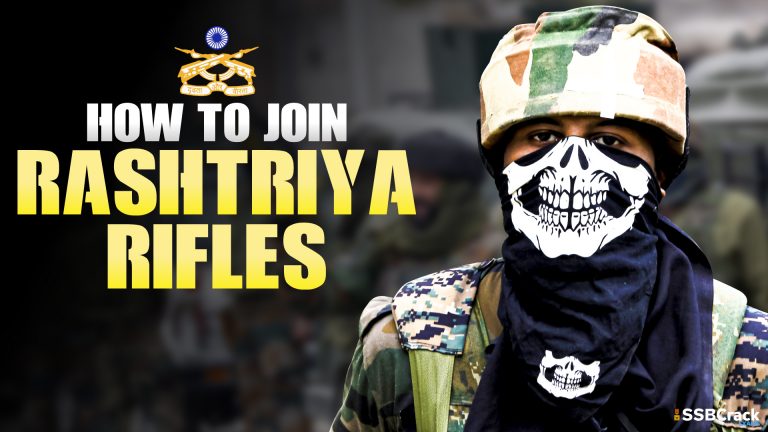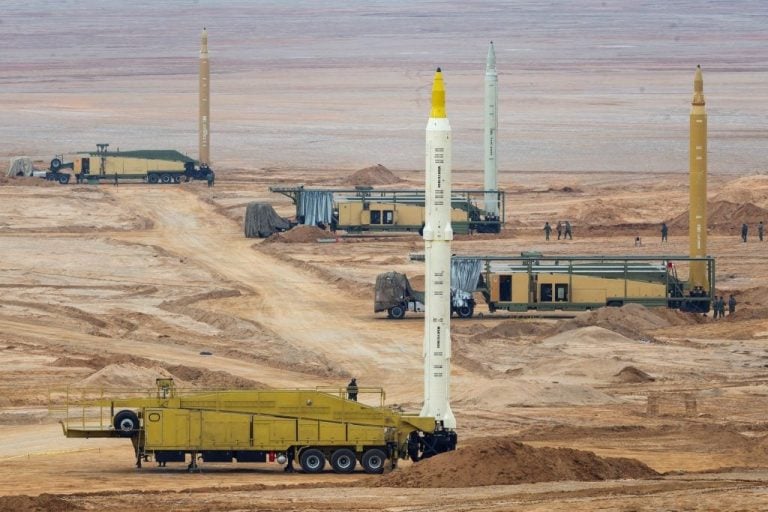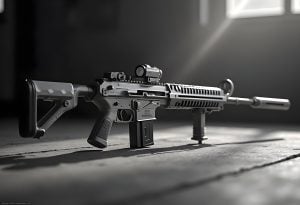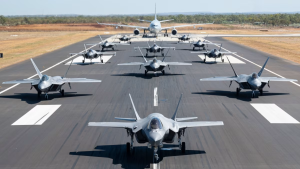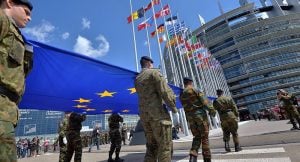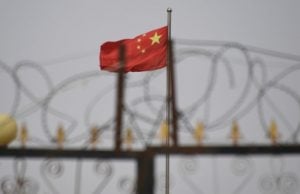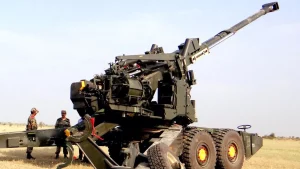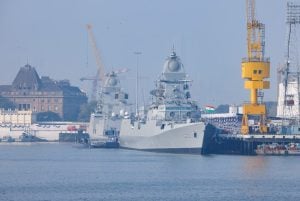The flight deck of an aircraft carrier is a bustling, high-intensity environment where precision and effective communication are paramount to ensuring safe and efficient operations. Amidst the roar of jet engines and the constant movement of aircraft, the crew relies on a unique system of hand signals to coordinate their actions and guide the intricate dance of takeoffs, landings, and ground maneuvers. Decoding the Hand Signals of Aircraft Carrier Operations is crucial for anyone interested in the inner workings of naval aviation.
Top 5 US Airports Serving Both Military and Civilian Flights
Roles and Responsibilities on an Aircraft Carrier
The aircraft carrier’s flight deck is a meticulously organized workspace, with each crew member assigned specific roles and responsibilities. These personnel are easily identifiable by the color-coded uniforms they wear, which serve as a visual cue for their respective duties. The brown-shirted unit or air wing plane captains and air wing line leading petty officers oversee the maintenance and preparation of the aircraft, while the yellow-uniformed aircraft handling officers, catapult and arresting gear officers, and plane directors are responsible for directing the movement and positioning of the planes on the deck.
The green-clad hook runners and maintenance crew perform the hazardous tasks of ensuring the proper placement of arresting wires and maintaining the ship’s catapult and arresting gear. Photographers mates and helicopter signal enlisted soldiers, also in green, assist with visual documentation and signaling. The red-uniformed weapons officers, mail and freight officers, and landing signal officers manage the aircraft’s armaments, handle cargo, and guide approaching planes during landing operations. Finally, the white-uniformed quality and safety inspectors and medical crew ensure the overall safety and well-being of the flight deck operations.
Color Coordination on an Aircraft Carrier
The color-coded uniforms worn by the flight deck crew serve a vital purpose in maintaining order and reducing the risk of errors during high-intensity operations. This system of visual identification allows personnel to quickly recognize their counterparts’ roles and responsibilities, facilitating seamless coordination and communication.
The yellow-shirted crew members, for instance, are immediately recognizable as the individuals responsible for directing the movement and handling of the aircraft. The green-uniformed personnel, on the other hand, are known to be performing the more hazardous tasks, such as ensuring the proper placement of arresting wires and maintaining the ship’s catapult and arresting gear.
This color coordination system not only enhances efficiency but also helps to minimize the potential for miscommunication or confusion, which could have catastrophic consequences in the fast-paced and high-stakes environment of an aircraft carrier’s flight deck.
Hand Signals on an Aircraft Carrier
In the noisy and chaotic environment of an aircraft carrier’s flight deck, verbal communication can often be challenging or even impossible. To overcome this obstacle, the crew relies on a standardized system of hand signals, known as “marshaling,” to convey essential information and instructions.
Takeoff Signals
During the takeoff process, pilots indicate their readiness by giving a thumbs-up signal to the plane captain.
At this point, a yellow-shirted crew member takes command, using various hand signals to break down the aircraft and initiate the taxiing process.
Taxiing Signals
The yellow-uniformed crew members utilize a series of signaling gestures to guide the aircraft around the flight deck.
These include standard aviation signals, such as waving arms to indicate taxiing and bending one arm to signal a turn.
Landing Signals
After touchdown, the hand signals become less complicated. Crew members use simple gestures to indicate throttle reduction, hookup, and whether the aircraft is ready for maintenance or further operations.
The yellow-shirted personnel also install chocks and chains to secure the aircraft upon landing.
These hand signals are not only efficient but also critical for ensuring the safety of the flight deck operations. In the high-noise environment, these visual cues provide a clear and unambiguous means of communication, minimizing the risk of misunderstandings or mistakes that could have severe consequences.
The Modern Air Force of Tiny Luxembourg
Takeoff Procedures on an Aircraft Carrier
The takeoff process on an aircraft carrier is a meticulously choreographed dance, with each crew member playing a vital role. As the pilot indicates their readiness for takeoff with a thumbs-up signal, a yellow-shirted crew member takes command, guiding the aircraft through the various stages of the launch sequence.
First, the crew members use hand signals to break down the aircraft, disconnecting it from the catapult and other ground equipment. Once the aircraft is ready to taxi, the yellow-uniformed personnel direct its movement around the flight deck, using a combination of waving arms and bending one arm to indicate the desired direction of travel.
As the aircraft approaches the catapult, the crew members carefully position the aircraft, aligning it with the launch system. At this point, the pilot may receive additional signals from the landing signal officer, who uses hand gestures to provide guidance and instructions for the critical moment of takeoff.
Throughout the entire process, the crew members maintain constant visual communication, ensuring that each step is executed with precision and coordination. This seamless integration of hand signals and teamwork is a testament to the high level of training and discipline that characterizes the operations of an aircraft carrier.
Taxiing Procedures on an Aircraft Carrier
The taxiing of aircraft on an aircraft carrier’s flight deck is a delicate and intricate process, requiring the coordinated efforts of the flight deck crew. Once the aircraft has been prepared for takeoff or landing, the yellow-uniformed personnel take charge, using a series of hand signals to guide the plane’s movement.
These signals are based on standard aviation gestures, with the crew members waving their arms to indicate the direction of taxiing and bending one arm to signal a turn. The precision and clarity of these hand signals are crucial, as the aircraft must navigate through a crowded and constantly changing environment, often with limited visibility and high-noise levels.
As the aircraft approaches its designated position, the crew members may use additional hand signals to fine-tune the aircraft’s positioning, such as lifting their hands over their heads and slowly bringing their arms together to measure the remaining distance. These subtle yet effective gestures help the pilots to maneuver the aircraft with pinpoint accuracy, ensuring a smooth and safe transition to the next phase of the operation.
Throughout the taxiing process, the crew members maintain constant visual contact with the pilots, ready to intervene or adjust their signals as needed. This level of coordination and communication is a testament to the training and expertise of the flight deck crew, who work tirelessly to ensure the safe and efficient movement of aircraft on the carrier’s crowded and dynamic surface.
Landing Procedures on an Aircraft Carrier
The landing of an aircraft on an aircraft carrier’s flight deck is a delicate and high-stakes operation, requiring the seamless coordination of the flight deck crew and the pilots. As the aircraft approaches the carrier, the red-uniformed landing signal officers use a series of hand signals to guide the pilot through the final stages of the landing process.
These signals may include indications for throttle reduction, hookup, and whether the aircraft is ready for maintenance or further operations. The yellow-shirted crew members also play a crucial role, installing chocks and chains to secure the aircraft upon touchdown.
Throughout the landing procedure, the crew members maintain constant visual contact with the pilots, ready to provide additional guidance or adjust their signals as needed. The precision and clarity of these hand signals are critical, as even the slightest miscommunication or error could have catastrophic consequences in the high-stakes environment of an aircraft carrier’s flight deck.
As the aircraft comes to a stop, the crew members may exchange waves or bows (in the case of Japanese operations) to acknowledge the successful completion of the landing. This exchange of gestures not only serves as a sign of respect but also reinforces the sense of teamwork and shared responsibility that underpins the entire operation.
Contingency Procedures and Exceptions
While the hand signal system on an aircraft carrier’s flight deck is highly standardized and widely practiced, there are instances where exceptions or contingency procedures may be necessary. For example, in situations where the pilots and ground crew are unable to establish direct communication through headsets, they may resort to alternative methods of signaling, such as the use of visual aids or pre-briefed procedures.
In some cases, particularly in general aviation or private jet operations, the aircraft may not be equipped with the necessary infrastructure to plug in headsets, necessitating the use of hand signals for communication. Similarly, smaller aircraft may not have the physical space or configuration to accommodate the full range of hand signals used on larger carriers.
In these situations, the crew members must be prepared to adapt and improvise, drawing on their training and experience to devise effective alternative communication methods. This flexibility and problem-solving mindset are crucial in the dynamic and unpredictable environment of an aircraft carrier’s flight deck, where the ability to respond quickly and effectively to changing conditions can mean the difference between a successful operation and a potential disaster.
Importance of Standardization and Training
The hand signal system used on an aircraft carrier’s flight deck is not just a collection of arbitrary gestures, but rather a highly standardized and rigorously trained protocol. This standardization ensures that all crew members, regardless of their specific roles or the aircraft they work with, are able to communicate effectively and efficiently, reducing the risk of misunderstandings or errors.
The extensive training and drills that flight deck personnel undergo are a testament to the importance of this standardization. From the moment they join the crew, these individuals are immersed in a comprehensive program that covers the meaning and application of each hand signal, as well as the broader context of their use within the overall operations of the aircraft carrier.
This training not only ensures that the crew members are proficient in the use of hand signals but also fosters a deep understanding of the underlying principles and objectives that guide the flight deck’s operations. By instilling a sense of purpose and responsibility in their personnel, the aircraft carrier’s leadership helps to create a culture of excellence and attention to detail that is essential for maintaining the highest standards of safety and efficiency.
Challenges and Limitations
While the hand signal system on an aircraft carrier’s flight deck is a highly effective means of communication, it is not without its challenges and limitations. One of the primary obstacles is the inherent noise and visual clutter of the flight deck environment, which can make it difficult for crew members to clearly see and interpret the signals being used.
Additionally, the fast-paced and constantly changing nature of the flight deck operations can sometimes require split-second decision-making and response times, leaving little room for ambiguity or misinterpretation. In these high-pressure situations, even the slightest hesitation or confusion in the use of hand signals could have severe consequences.
Another limitation of the hand signal system is its reliance on direct line-of-sight communication. In certain scenarios, such as when an aircraft is obscured by other equipment or personnel, the crew members may be unable to maintain visual contact, necessitating the use of alternative communication methods or the deployment of additional signallers to provide a clear line of sight.
Despite these challenges, the aircraft carrier’s flight deck crew is well-trained and equipped to overcome these limitations through a combination of rigorous training, effective coordination, and a deep understanding of the underlying principles of their operations. By continually refining and improving their hand signal protocols, these dedicated professionals ensure that the flight deck remains a safe and efficient environment for the launch, recovery, and movement of aircraft.
Importance of Stealth and Electronic Warfare in Today’s Military Aircraft
Conclusion
The hand signal system used on an aircraft carrier’s flight deck is a testament to the ingenuity and dedication of the men and women who work tirelessly to ensure the safe and efficient operation of these massive floating airfields. Through a combination of standardized protocols, rigorous training, and a deep understanding of their roles and responsibilities, the flight deck crew is able to communicate effectively and coordinate their actions in even the most demanding and high-stakes environments.
As the world of naval aviation continues to evolve, with the introduction of new technologies and the ever-increasing complexity of aircraft and carrier operations, the importance of this hand signal system will only continue to grow. By mastering the intricacies of these visual cues, the flight deck crew not only ensures the safety of their own operations but also contributes to the overall readiness and effectiveness of the aircraft carrier as a critical component of the nation’s defense.
FAQs
1. What is the purpose of the color-coded uniforms worn by the flight deck crew?
The color-coded uniforms worn by the flight deck crew serve to quickly identify the roles and responsibilities of each individual. This visual cue helps to enhance coordination and communication, reducing the risk of errors during high-intensity operations.
2. How do pilots indicate their readiness for takeoff on an aircraft carrier?
Pilots indicate their readiness for takeoff by giving a thumbs-up signal to the plane captain. This initiates the process of breaking down the aircraft and preparing it for the launch sequence.
3. What is the role of the yellow-uniformed crew members on an aircraft carrier’s flight deck?
The yellow-uniformed crew members, such as aircraft handling officers and plane directors, are responsible for directing the movement and positioning of the aircraft on the flight deck. They use a series of hand signals to guide the planes during taxiing, takeoff, and landing procedures.
4. How do the crew members communicate during the landing process on an aircraft carrier?
During the landing process, the red-uniformed landing signal officers use hand signals to guide the pilots, indicating throttle reduction, hookup, and the aircraft’s readiness for maintenance or further operations. The yellow-shirted crew members also assist by installing chocks and chains to secure the aircraft upon touchdown.
5. What are some of the challenges and limitations associated with the hand signal system on an aircraft carrier’s flight deck?
Some of the key challenges include the inherent noise and visual clutter of the flight deck environment, the need for split-second decision-making and response times, and the reliance on direct line-of-sight communication. The crew must be highly trained and coordinated to overcome these limitations and ensure the safe and efficient operation of the aircraft carrier.


